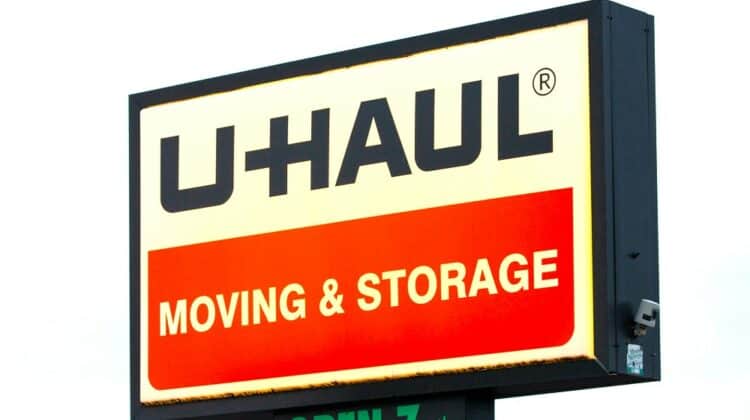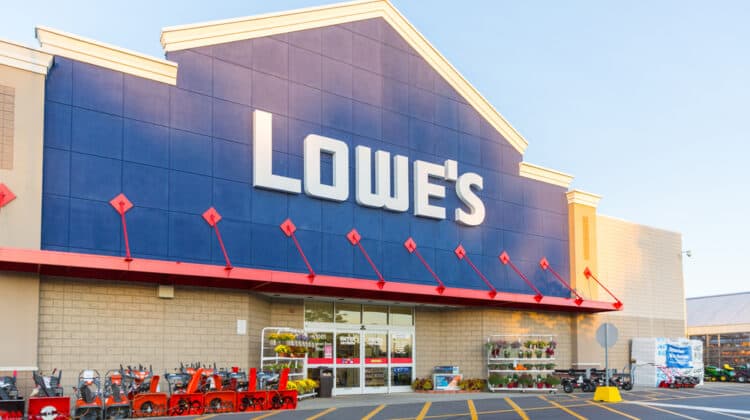
Bread is one of the staple foods in most homes.
A slice or two of bread is great on its own with a little bit of butter or peanut butter, but it’s also a necessary ingredient for most sandwiches.
Since bread can easily fill you up, most homes buy loaves of bread to add some filler to their meals.
However, you may have noticed that the price of bread has steadily increased.
Considering some people rely on cheap bread for survival, you may wonder what makes it so expensive.
Why Is Bread So Expensive? (10 Reasons)

The average price of bread is $1.84.
In some areas, that price can increase to $2.50 or more.
Certain factors like the cost of growing wheat, wheat shortages, and the short shelf life of bread all impact the price.
Let’s look at these factors in more detail.
1. Drought Affecting Wheat

Many factors impact the environment, which also impacts the supply of wheat.
One of those factors is drought.
There are different types of wheat grown throughout the United States.
Some wheat is best for cakes, others for cereal, and some for loaves of bread.
When it comes to loaves of bread, the wheat used to bake it grows in the heart of the United States.
Midwest states that make up the very center of the country primarily grow wheat for bread.
The problem with this location is that it’s also suffering from a severe drought.
The drought is hitting Kansas and Oklahoma the hardest.
Kansas, in particular, is the country’s top wheat producer.
Drought is a problem because it keeps wheat seeds from sprouting.
If the rain comes too late, then the wheat won’t be able to sprout and grow before freezing temperatures arrive and kill it.
This impacts the supply of wheat, which means there’s a higher price.
2. Fertilizer Costs

Another problem affecting farmers is the price of fertilizer.
In order to ensure their wheat grows healthy and abundantly, most farmers apply fertilizer.
The fertilizer might also have other ingredients mixed in to support wheat health.
The problem with fertilizer is that prices have skyrocketed.
The major factor pushing up the price of fertilizer is the lack of ammonia.
Ammonia plants have either closed down temporarily or shuttered permanently in some parts of the world.
In China, for example, a push towards using clean energy has decreased the amount of ammonia that they normally produce and export to the United States.
Ammonia is a vital part of making fertilizer.
When there’s an ammonia shortage, then there’s also a fertilizer shortage.
This increases the price of fertilizer because the demand for it is high.
Farmers all over the world need fertilizer to grow crops to feed their country and others besides it.
With farmers having to pay more for fertilizer, they’re selling their crops at higher prices to offset costs.
Since wheat is more expensive to buy, bread makers also have to sell at higher prices to offset their costs.
3. Imported Wheat

While the United States grows its own wheat, it does import wheat from other countries as well.
Canada and China are two of its major trade partners.
Canada is the primary trade partner since it’s closer than China.
This makes bread expensive because importing goods is usually a bit more expensive.
To import something, there’s usually some sort of import tax on the good.
That’s to prevent a country from selling something at a lower price than what domestic businesses sell for.
If Canada were to sell cheap bread, for example, most people would likely buy their bread instead of supporting local bread suppliers.
Local bread suppliers might not be able to provide lower prices due to their own costs.
An import fee helps increase the price to make it more competitive with local suppliers.
However, that also means it’s more expensive.
Furthermore, if Canada is facing any problems with growing wheat, that’s going to impact their prices, too.
Their bread will become even more expensive as a result.
Bread is expensive when it’s imported.
4. Freezing Temperatures

Another environmental problem affecting the supply of wheat is freezing temperatures.
While the middle of the United States is no stranger to cold winters, they tend to be a bit milder than some other areas of the country.
That’s changed.
More and more, the central and even the southern part of the United States has experienced freezing temperatures.
For example, snow is becoming more common in Texas.
While this might not seem like a big deal, it’s having a huge impact on agriculture.
The farmers in the area plant according to the weather cycles that they know.
With climate change warping seasons and temperatures, however, that cycle is no longer certain.
Farmers might think that they have a few months to harvest when in reality, it might only be a few weeks before a severe cold front passes through.
The problem with freezing temperatures is that they can destroy some species of wheat.
While some wheat species grow well in cold temperatures, others do not.
An unexpected cold front could destroy an entire field.
At the very least, the yield from that crop will decrease.
With less wheat to account for, it impacts the supply available to make bread and other grain-related products.
Bread is expensive because freezing temperatures affect the supply of wheat.
5. Frequent Tornados In Grain Valley

If cold temperatures and drought weren’t enough, then tornados may be.
Even before drought and cold temperatures, the heart of the United States has always had problems with tornados.
Its flat plains tend to be the perfect breeding ground for the creation of tornados and severe storms.
Tornados wreak havoc on wheat farms.
Besides pulling the crops up right from the ground, they can also destroy grain mills.
Grain mills are essentially storage areas where farmers store the wheat until they’re transported.
The destruction of a mill results in a major loss of product.
Any time a tornado passes through a wheat farm and causes damage, that impacts the supply of wheat that’s available to make bread.
Particularly bad tornados might destroy a few wheat farms.
It doesn’t just affect the wheat farm for that year either.
It may take several years before the wheat farm is able to produce yields as it did before the tornado.
All the while, this shortage of wheat is impacting the price of bread.
6. Crop Disease

Disease is another problem that wheat farmers have to contend with when growing the crop.
There’s no shortage of different rot-related diseases that can affect wheat.
Some are easier to cure than others.
Some spread quickly and can kill an entire plot of wheat.
To protect their plots, farmers often have to spend a lot of money on medicine that can cure their wheat.
It doesn’t always work.
Those purchases add to their costs of doing business.
That then makes wheat more expensive.
If they lose wheat to disease, then there’s a shortage.
That also impacts the price of bread.
Disease is common, but it doesn’t always hit everyone at once.
If it did, it would wreak havoc on the national supply of wheat.
Bread prices would soar.
As it happens, bread prices fluctuate whenever disease passes through wheat farms.
7. Planting Corn For Ethanol Instead Of Wheat

While wheat always sells, it doesn’t always sell for high prices.
Because of that, some farmers have decided to switch from wheat to more lucrative crops.
Corn, for example, has become quite lucrative.
It’s great as feed for animals, for human consumption, and for the development of ethanol.
While ethanol as a fuel source isn’t as popular as it was when it was first conceived, it’s still profitable.
Some farmers can make more money selling corn than they can selling wheat.
When it comes to running a business, it makes sense to lean towards planting the crop that’s going to make your business the most profitable.
This impacts the price of wheat because it means there are fewer farmers growing it.
That alone means the supply of wheat faces a reduction.
The supply of wheat becomes a bit smaller unless the current farmers expand their fields.
Furthermore, if those farmers face problems with drought or tornados or anything else, their supply of wheat reduces as well.
That means there’s an even greater shortage.
Since there’s less wheat available to make bread with, the bread that does end up getting made is going to come at higher prices.
There’s a higher demand for bread than the supply of wheat to make the bread.
Bread is expensive because some farmers have abandoned wheat and turned toward other, more profitable crops.
8. Milk Costs

When looking at your bread, you might find that one of the ingredients used in it is milk.
Some suppliers of bread will mix milk into their bread for a few reasons.
For one, it adds some calcium to the bread.
They’re then able to sell their bread as something that is healthy to eat since it contains calcium.
It helps them attract customers to their bread instead of a competitor’s brand of bread.
Others might add milk to sweeten the bread.
It makes it a bit more flavorful and enjoyable.
Customers will be more likely to buy that specific bread since it tastes better to them.
Another reason they use milk is that it makes softer bread.
Dough made from milk increases the amount of water that the dough absorbs.
The end result is a softer bread that people tend to enjoy.
When dough uses water, it tends to be a bit stiffer.
This is ideal for some types of bread, but not all of them.
Finally, milk can also increase the fermentation time, which means suppliers are able to produce more.
The problem with using milk is that the price of milk can also become expensive.
When something impacts the supply of milk, then prices increase.
It might be disease or the increasing costs of raising dairy cattle.
Whatever the reason is, if milk is more expensive, then bread that contains milk is also going to be more expensive.
9. Specialty Bread

While most people end up buying white bread at the store, there’s an assortment of different types of bread.
Some of the most expensive types of bread are multi-grain loaves of bread.
Manufacturers of this type of bread use several different types of grain in its production.
It’s more expensive exactly because its production uses more resources.
It doesn’t just contain wheat.
As such, if any of the other grains are facing supply problems, that’s going to make the bread more expensive, too.
Multi-grain bread is also expensive because it’s deemed healthier.
It’s a more wholesome type of bread since it has more nutrients than white bread.
Because it’s healthier, it comes at healthy prices.
Anytime something is healthy, it automatically becomes more expensive.
Besides multi-grain bread, there are even rarer types of bread that come imported from France or Italy.
Even heading to your local baker can introduce you to some specialty breads.
Because they’re made in a specific way or use special ingredients, they tend to be more expensive.
Bread is expensive when you’re buying a specialty variety of bread.
10. Short Shelf Life

A final reason bread is expensive is that it has a short shelf life.
Bread doesn’t last long.
It succumbs to mold quickly.
As such, you often find yourself having to buy a new loaf of bread every week or every other week.
That makes bread expensive because it’s a constant purchase.
You end up spending a lot of money on bread just because it doesn’t last long.
It also means that, when it comes to transporting bread, the suppliers usually have to invest in some sort of cooling chamber to keep the bread as fresh as possible.
They don’t want their bread to arrive at grocery stores moldy.
Since it costs them more money to transport bread, they charge higher prices for it.
Conclusion
Bread is often an essential part of a person’s diet.
However, for the reasons listed above, the price of bread can easily skyrocket.
NEXT: Why Do Coaches Wear Headsets? (Explained)






















